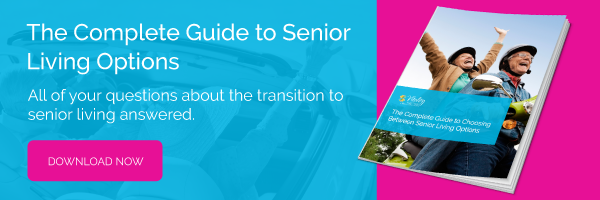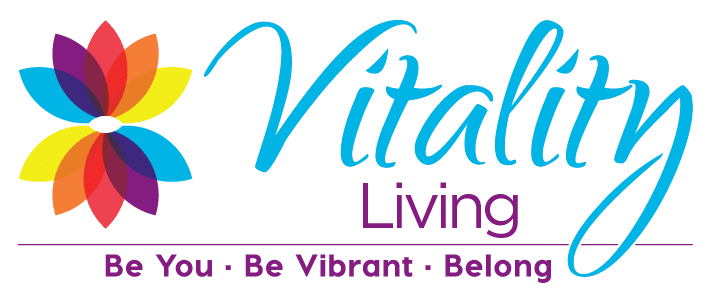January is a month when senior care organizations typically receive record numbers of phone calls and questions from worried adult children. In many cases, it’s because they spent time visiting an elder during the holidays and they realize their senior loved one needs a little extra help.
But the sheer number of senior living options can be overwhelming for older adults and their children.
We thought it might help if we shared an overview of the different types of senior care that are available. Then we’ll explain how you can download our more comprehensive guide to choosing a senior living option for yourself or a loved one.
Navigating Senior Care Options
Senior housing and care options vary greatly. This variety allows older adults to find the level of care that best meets their unique needs. Some more active types of senior living, such as an independent living community, offer less focus on medical needs and more focus on socialization and life enrichment.
For residents who require assistance with more complex health conditions and greater medical needs, memory care, rehab care, and long-term care may be the best options. By contrast, those who just need a little in-home assistance might find home care to be a helpful short-term solution.
Let’s talk a little more about each one.
- Independent Living: This senior living option is designed for active older adults. The focus is on promoting a maintenance-free lifestyle that gives seniors freedom to reconnect with old passions and explore new ones. Residents of these communities typically have a wide range of life enrichment activities to enjoy each day. Most independent living communities also offer wellness programs, such as yoga, light weight training, walking, and meditation. Some provide a la carte services like meals, laundry, concierge, and housekeeping to make life more convenient for residents.
- Assisted Living: These care communities offer residents the independence they desire with the supportive services they need nearby. Most seniors who choose an assisted living community require assistance with one or two activities of daily living, such as bathing, dressing, and medication management. Meals are typically served restaurant-style in a dining room. Housekeeping and laundry are usually provided.
- Skilled Nursing & Rehab Center: These short-term care centers focus on providing older adults with therapy and skilled nursing services. Patients typically transfer to a rehab center after a hospital stay for an injury, illness, or surgery. The goal is to help the senior rehabilitate and safely return to whatever setting they call home.
- Long-Term Care: A long-term care center, also referred to as a nursing home, is for older adults or those living with disabilities that require 24-hour nursing care. In addition to delivering skilled health care services, nursing homes also provide residents with meals, life enrichment activities, housekeeping, laundry, and assistance with the activities of daily living.
- Memory Care: Specialty Alzheimer’s care is often called memory care. Many assisted living communities and nursing homes offer this type of care in a dedicated area of their community. Staff receives special training to allow them to understand how to support the unique needs of an adult living with memory loss. Life enrichment programs are designed to work around any physical and cognitive impairment the disease creates and to find ways to support success.
- In-Home Care: Non-medical home care services, known as in-home care or private duty home care, help seniors to maintain their independence at home a little longer. Home care staff can come to the older adult’s home to provide assistance with meals, housekeeping, and laundry. They can also offer support with personal care needs such as grooming, bathing, and dressing.
Learn More About Senior Living Options
Ready to learn more?
Vitality has a helpful resource you can download at no cost. The Complete Guide to Choosing Between Senior Living Options takes a more in-depth look at each senior living option, as well as shares strategies for financing, tips for talking with seniors about moving, and much more!




